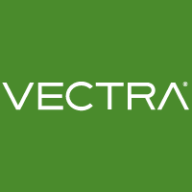

Vectra AI and Microsoft Sentinel compete in the network security category. Based on user feedback, each product has its strengths, but Vectra AI seems to have the upper hand in areas like detailed metadata enrichment and threat detection capabilities, while Microsoft Sentinel's robust automation and integration with Microsoft products are significant advantages.
Features: Vectra AI offers comprehensive network visibility, an efficient roll-up alert system to prioritize incident management, and detailed metadata enrichment supported by AI and machine learning. It excels in reducing alert fatigue and enhancing threat detection. Microsoft Sentinel integrates seamlessly with Microsoft products, leveraging scalable cloud-native capabilities, automation rules, and numerous data connectors, enhancing its utility as a holistic security solution.
Room for Improvement: Vectra AI needs better third-party tool integration, packet management improvements, and enhanced reporting features. Users desire more granular configuration options and consistent handling of IP address changes. Microsoft Sentinel faces challenges with data ingestion costs, complexity of KQL queries for non-experts, and limited on-premise support. Users seek more built-in automation and clearer pricing.
Ease of Deployment and Customer Service: Vectra AI is generally deployed in on-premises and hybrid settings, praised for its responsive and personal technical support, increasing customer satisfaction despite scalability concerns. Microsoft Sentinel, being cloud-based, benefits from Microsoft's robust infrastructure and scalability, though users desire better documentation and onboarding support for hybrid systems.
Pricing and ROI: Vectra AI's pricing model is based on IP address counts and additional features like Cognito Recall, often seen as high initially but justified by long-term ROI through risk reduction and efficiency gains. Microsoft Sentinel uses a consumption-based model tied to data volume, regarded as costly, particularly for non-Microsoft data sources, but valued for cost-effectiveness within the Microsoft ecosystem, offering competitive ROI with extensive features and integrations.
Microsoft Azure was not fitting for short-term cost savings but promised a better ROI over three to five years for medium to large companies.
Their solutions' integration simplifies resolving issues compared to those caused by third-party products.
When my team needs to escalate issues to Microsoft, especially for Microsoft Sentinel, the response is fast through their French entity.
Working with a Sentinel engineer helped us tune settings effectively.
The support is quite reliable depending on the service engineer assigned.
Office 365 and Exchange are running on it, covering about 35,000 users efficiently.
As our organization uses Microsoft Azure and Defender, everything grows together, and we can integrate various features seamlessly.
So far, we have not experienced any issues, and it has been stable from the beginning.
In the past two years, our team hasn't encountered any issues with the stability of Microsoft Sentinel from an operations perspective.
Sentinel's stability is great.
Currently, we are happy to have a way in the middle with not so much cost, but it would be nice to have the ability to enhance the automation of workflows based on learned incidents.
We have some tools, such as our off-site Meraki firewalls, that have not fully integrated with Sentinel.
We choose other solutions for basic monitoring due to better cost opportunities.
You need to have a Linux server, and from the Linux server, you must perform AI tasks, and there is a lot to be handled in the back end.
Neither Vectra nor Darktrace have a function like a status health check on my log sources and traffic sources.
Microsoft Sentinel offers more capabilities than Bastion, with a more intuitive experience.
We already had the necessary licensing for Sentinel, so we didn't need to spend extra money.
Vectra is cheaper in terms of pricing and features compared to Darktrace.
It is very acceptable when you compare it with Darktrace, for example.
Custom workbooks are valuable. It is one of the crucial points in dealing with potential security threats in an automated way without requiring too much manpower.
The most valuable features for us include threat collection, threat detection, response, and the knowledge base for investigation.
There are extensive out-of-box detection capabilities.


Microsoft Sentinel is a scalable, cloud-native, security information event management (SIEM) and security orchestration automated response (SOAR) solution that lets you see and stop threats before they cause harm. Microsoft Sentinel delivers intelligent security analytics and threat intelligence across the enterprise, providing a single solution for alert detection, threat visibility, proactive hunting, and threat response. Eliminate security infrastructure setup and maintenance, and elastically scale to meet your security needs—while reducing IT costs. With Microsoft Sentinel, you can:
- Collect data at cloud scale—across all users, devices, applications, and infrastructure, both on-premises and in multiple clouds
- Detect previously uncovered threats and minimize false positives using analytics and unparalleled threat intelligence from Microsoft
- Investigate threats with AI and hunt suspicious activities at scale, tapping into decades of cybersecurity work at Microsoft
- Respond to incidents rapidly with built-in orchestration and automation of common tasks
To learn more about our solution, ask questions, and share feedback, join our Microsoft Security, Compliance and Identity Community.
Vectra AI is used for detecting network anomalies and potential malicious activities, providing visibility into network traffic and enhancing threat detection across environments.
Organizations deploy Vectra AI mainly on-premises with additional cloud components. It helps with compliance, incident response, security monitoring, detecting insider threats, and correlating network events. Vectra AI captures and enriches network metadata, provides detailed dashboards, reduces false positives, and supports cross-environment behavioral analysis to enhance threat detection and prioritization. While valued for its high accuracy and alert aggregation, it has room for improvement in UI/UX, packet management, and integration with SIEMs and other tools. It is noted for expensive pricing and limited proactive threat response features.
What are Vectra AI's most valuable features?In specific industries, Vectra AI is deployed to monitor complex networks and alleviate challenges in threat detection. It is particularly effective in sectors requiring stringent compliance and security measures, offering insights and capabilities crucial for protecting sensitive data and maintaining operational integrity.
We monitor all AI-Powered Cybersecurity Platforms reviews to prevent fraudulent reviews and keep review quality high. We do not post reviews by company employees or direct competitors. We validate each review for authenticity via cross-reference with LinkedIn, and personal follow-up with the reviewer when necessary.